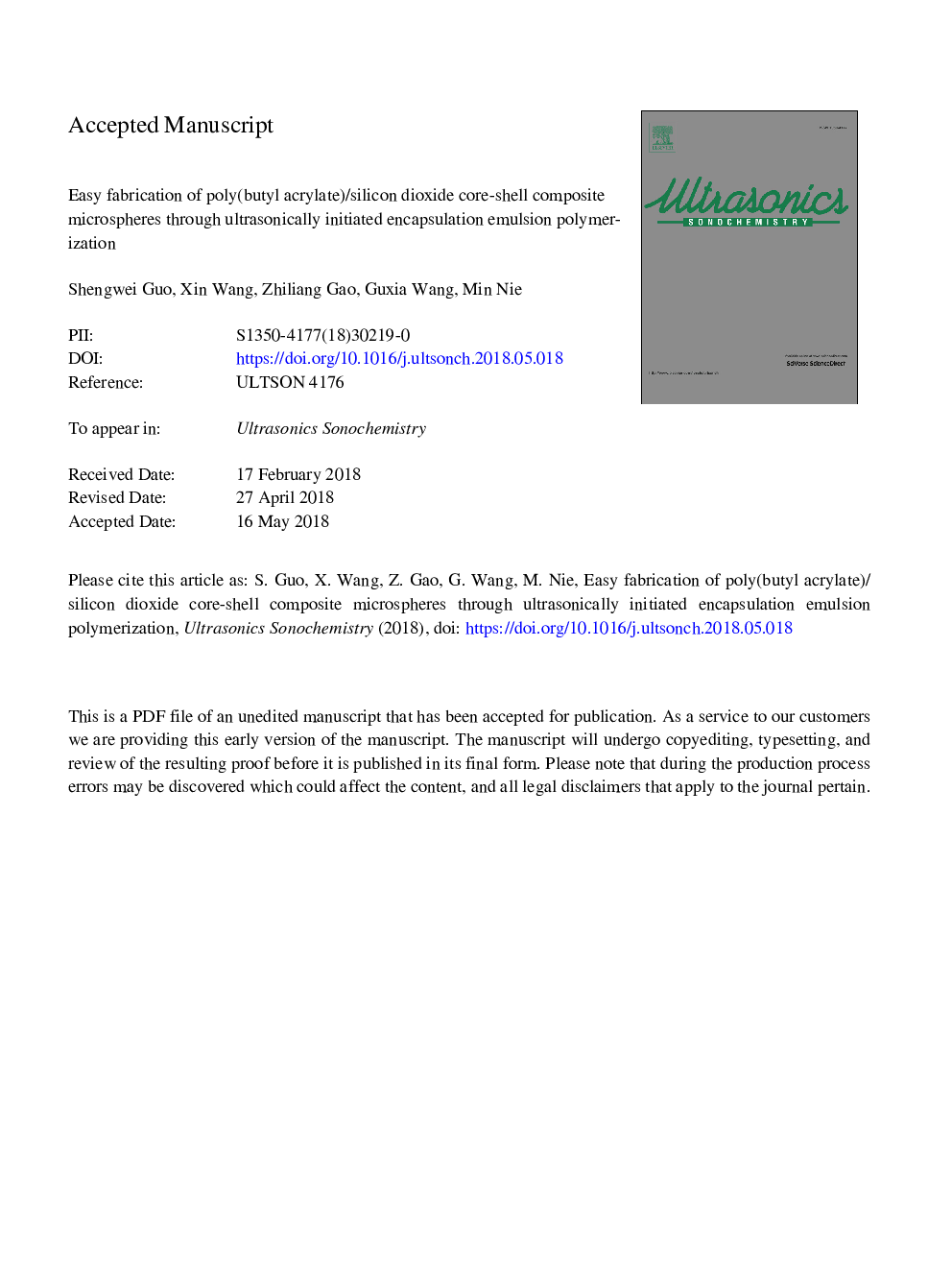| Article ID | Journal | Published Year | Pages | File Type |
|---|---|---|---|---|
| 7701998 | Ultrasonics Sonochemistry | 2018 | 31 Pages |
Abstract
In this study, instead of using the usual chemical methods, poly(butyl acrylate)/silicon dioxide (PBA/SiO2) core-shell composite microspheres were prepared using a physical method-ultrasonically initiated encapsulation emulsion polymerization. The morphology and particle size of the PBA/SiO2 microspheres were analysed using transmission electron microscopy (TEM) and dynamic light scattering (DLS). The encapsulation state was determined using X-ray photoelectron spectroscopy (XPS). The composition and thermogravimetric behavior were characterized using Fourier transform infrared spectroscopy (FTIR) and thermogravimetric analysis (TGA). The TEM and DLS results show that monodisperse PBA/SiO2 core-shell composite microspheres were successfully obtained. The diameter and shell thickness were 150â¯nm and 15â¯nm, respectively. The XPS and FTIR results show that there was no new chemical bond between the PBA shell and the SiO2 core. They were just combined by physical adsorption. The encapsulation efficiency of SiO2 microspheres by PBA is 8.2% through TGA. In addition, this article focuses on the formation mechanism of PBA/SiO2 core-shell microspheres prepared through ultrasonically initiated encapsulation emulsion polymerization. Intuitive observation and the results of TEM and DLS, especially the change in zeta potential, clearly indicate an encapsulation process. Thereinto, a bilayer-structure space established by appropriate amount of cetyltrimethyl ammonium bromide (CTAB) molecules is the key to realize ultrasonically initiated encapsulation emulsion polymerization.
Related Topics
Physical Sciences and Engineering
Chemistry
Chemistry (General)
Authors
Shengwei Guo, Xin Wang, Zhiliang Gao, Guxia Wang, Min Nie,
